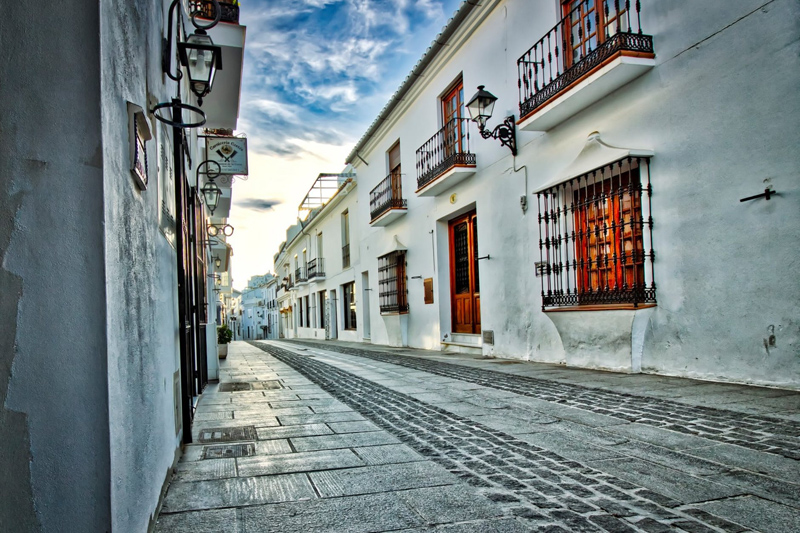Numbers in Spanish.

Numbers are everywhere... Why don't we learn today how to express quantities in Spanish?
Let's begin with:
1: uno (un / una) (*)
2: dos
3: tres
4: cuatro
5: cinco
6: seis
7: siete
8: ocho
9: nueve
10: diez
(*) Number 1 ("uno"), in Spanish, changes to "un" if it is followed by a masculine noun, and to "una" if followed by a feminine noun.
Examples:
"Yo tengo un hermano" (I have one brother)
As "hermano" is a masculine noun, we use "un"
"Yo tengo una hermana" (I have one sister)
In this case, "hermana" is feminine, that's why we use "una".
Ok, but... what about for "uno"?
¿Cuantos libros tienes? (How many books do you have got?)
Sólo tengo uno. (I just have got one)
(See it?)
Ok, here we have other examples:
"Tengo tres manzanas" (I have got three apples)
As you can see, the order of verb and complements in both sentences (Spanish and English) is very similar. And… good news! Apart from number "uno", Spanish numbers make no difference between masculine and feminine nouns. So, you can say:
"La casa tiene cuatro habitaciones" (The house has four rooms)
(The word "habitación" is masculine)
or:
"Tienes cuatro hermanas" (You have four sisters)
(The word "hermana" is feminine)
§ Grammar Point:
What's the difference between "habitación" and "habitaciones"?
The difference is just that the first word is singular and the second plural. And here comes the rule:
- In Spanish, any word ending with "-ón" makes the plural in "-ones". Remember?
Camión - Camiones (Van)
Numbers: 11 to 20
11: once
12: doce
13: trece
14: catorce
15: quince
16: dieciséis
17: diecisiete
18: dieciocho
19: diecinueve
20: veinte
Note than numbers 16 (dieciséis), 17 (diecisiete), 18 (dieciocho) and 19 (diecinueve) are "contracted" words:
16 = diez y seis -> dieciséis
17 = diez y siete -> diecisiete
18 = diez y ocho -> dieciocho
19 = diez y nueve -> diecinueve
(where the word "y" means "and")
This first 20 numbers could be the most complicated, as 30, 40, 50, etc… follow rules which may be easier to remember. Let's take a look at them.
Numbers: from 21 to 30
21: veintiuno
22: veintidós
23: veintitrés
24: veinticuatro
25: veinticinco
26: veintiséis
27: veintisiete
28: veintiocho
29: veintinueve
30: treinta
From number 21, everything becomes easier. Let's see how it works:
20 = veinte
So, 21 is "veinte" and "uno" --> "veinte y uno". (As said before, "y" means "and") Isn't it?
Ok. From this point, these three words becomes one: veintiuno. The final "e" of "veinte" disappears and the conjunction "y" becomes an "i".
And the rest of these numbers will follow the same rule.
Other Numbers:
As said before, from number 21, we won't find more exceptions. So all we need, by now, is to know how to say 40, 50, 60, etc.
40: cuarenta
50: cincuenta
60: sesenta
70: setenta
80: ochenta
90: noventa
100: cien
1000: mil
Let's see some examples:
"Mi marido tiene cuarenta y dos años" (My husband is 42 years old)
- You can see that number 42 is composed by three words: cuarenta (forty) y (and) dos (two)
"El libro tiene ciento siete páginas" (The book has 107 pages)
- From number 100 to 999, numbers are composed as follows:
101 - ciento uno
102 - ciento dos
103 - ciento tres, etc.
Note that we use "ciento" + any number. We use the word "cien" just for the exact number (100).
Other exception is 500 = quinientos, as numbers from 100 to 400, and from 600 to 900 follow the same rule:
100 = cien
200 = doscientos
300 = trescientos
400 = cuatrocientos
600 =seiscientos
700 = setecientos
(in this case, it should be "sietecientos", but vowels -ie- become an -e-); So, instead of sietecientos we must say setecientos.
800 = ochocientos
900 = novecientos
(this is also other exception, as number 700: vowels -ue- become an -o-); So, instead of nuevecientos, we must say novecientos.
For any question or doubt, feel free to e-mail me or just post a message at the forum.
¡Que tenga un buen día!
Angeles F.
VOCABULARY IN THIS LESSON (alphabetical order):
Let's begin with:
- Numbers: 1 to 10
1: uno (un / una) (*)
2: dos
3: tres
4: cuatro
5: cinco
6: seis
7: siete
8: ocho
9: nueve
10: diez
(*) Number 1 ("uno"), in Spanish, changes to "un" if it is followed by a masculine noun, and to "una" if followed by a feminine noun.
Examples:
"Yo tengo un hermano" (I have one brother)
As "hermano" is a masculine noun, we use "un"
"Yo tengo una hermana" (I have one sister)
In this case, "hermana" is feminine, that's why we use "una".
Ok, but... what about for "uno"?
¿Cuantos libros tienes? (How many books do you have got?)
Sólo tengo uno. (I just have got one)
(See it?)
Ok, here we have other examples:
"Tengo tres manzanas" (I have got three apples)
As you can see, the order of verb and complements in both sentences (Spanish and English) is very similar. And… good news! Apart from number "uno", Spanish numbers make no difference between masculine and feminine nouns. So, you can say:
"La casa tiene cuatro habitaciones" (The house has four rooms)
(The word "habitación" is masculine)
or:
"Tienes cuatro hermanas" (You have four sisters)
(The word "hermana" is feminine)
§ Grammar Point:
What's the difference between "habitación" and "habitaciones"?
The difference is just that the first word is singular and the second plural. And here comes the rule:
- In Spanish, any word ending with "-ón" makes the plural in "-ones". Remember?
11: once
12: doce
13: trece
14: catorce
15: quince
16: dieciséis
17: diecisiete
18: dieciocho
19: diecinueve
20: veinte
Note than numbers 16 (dieciséis), 17 (diecisiete), 18 (dieciocho) and 19 (diecinueve) are "contracted" words:
16 = diez y seis -> dieciséis
17 = diez y siete -> diecisiete
18 = diez y ocho -> dieciocho
19 = diez y nueve -> diecinueve
(where the word "y" means "and")
This first 20 numbers could be the most complicated, as 30, 40, 50, etc… follow rules which may be easier to remember. Let's take a look at them.
21: veintiuno
22: veintidós
23: veintitrés
24: veinticuatro
25: veinticinco
26: veintiséis
27: veintisiete
28: veintiocho
29: veintinueve
30: treinta
From number 21, everything becomes easier. Let's see how it works:
20 = veinte
So, 21 is "veinte" and "uno" --> "veinte y uno". (As said before, "y" means "and") Isn't it?
Ok. From this point, these three words becomes one: veintiuno. The final "e" of "veinte" disappears and the conjunction "y" becomes an "i".
And the rest of these numbers will follow the same rule.
As said before, from number 21, we won't find more exceptions. So all we need, by now, is to know how to say 40, 50, 60, etc.
40: cuarenta
50: cincuenta
60: sesenta
70: setenta
80: ochenta
90: noventa
100: cien
1000: mil
Let's see some examples:
"Mi marido tiene cuarenta y dos años" (My husband is 42 years old)
- You can see that number 42 is composed by three words: cuarenta (forty) y (and) dos (two)
"El libro tiene ciento siete páginas" (The book has 107 pages)
- From number 100 to 999, numbers are composed as follows:
101 - ciento uno
102 - ciento dos
103 - ciento tres, etc.
Note that we use "ciento" + any number. We use the word "cien" just for the exact number (100).
Other exception is 500 = quinientos, as numbers from 100 to 400, and from 600 to 900 follow the same rule:
100 = cien
200 = doscientos
300 = trescientos
400 = cuatrocientos
600 =seiscientos
700 = setecientos
(in this case, it should be "sietecientos", but vowels -ie- become an -e-); So, instead of sietecientos we must say setecientos.
800 = ochocientos
900 = novecientos
(this is also other exception, as number 700: vowels -ue- become an -o-); So, instead of nuevecientos, we must say novecientos.
For any question or doubt, feel free to e-mail me or just post a message at the forum.
¡Que tenga un buen día!
Angeles F.
VOCABULARY IN THIS LESSON (alphabetical order):
| año (m): year | hermano (m) : brother |
| camion (m): van | manzana (f): apple |
| ¿cuantos...? (m): How many...? | marido (m): husband |
| habitación (f): room | página (f): page |
| hermana (f): sister | solo: just, only, lonely, alone |
| libro (m): book | tengo (Tener) : I have (To have) |

Editor's Picks Articles
Top Ten Articles
Previous Features
Site Map
Content copyright © 2023 by Angeles Fernández. All rights reserved.
This content was written by Angeles Fernández. If you wish to use this content in any manner, you need written permission. Contact Angeles Fernandez for details.







